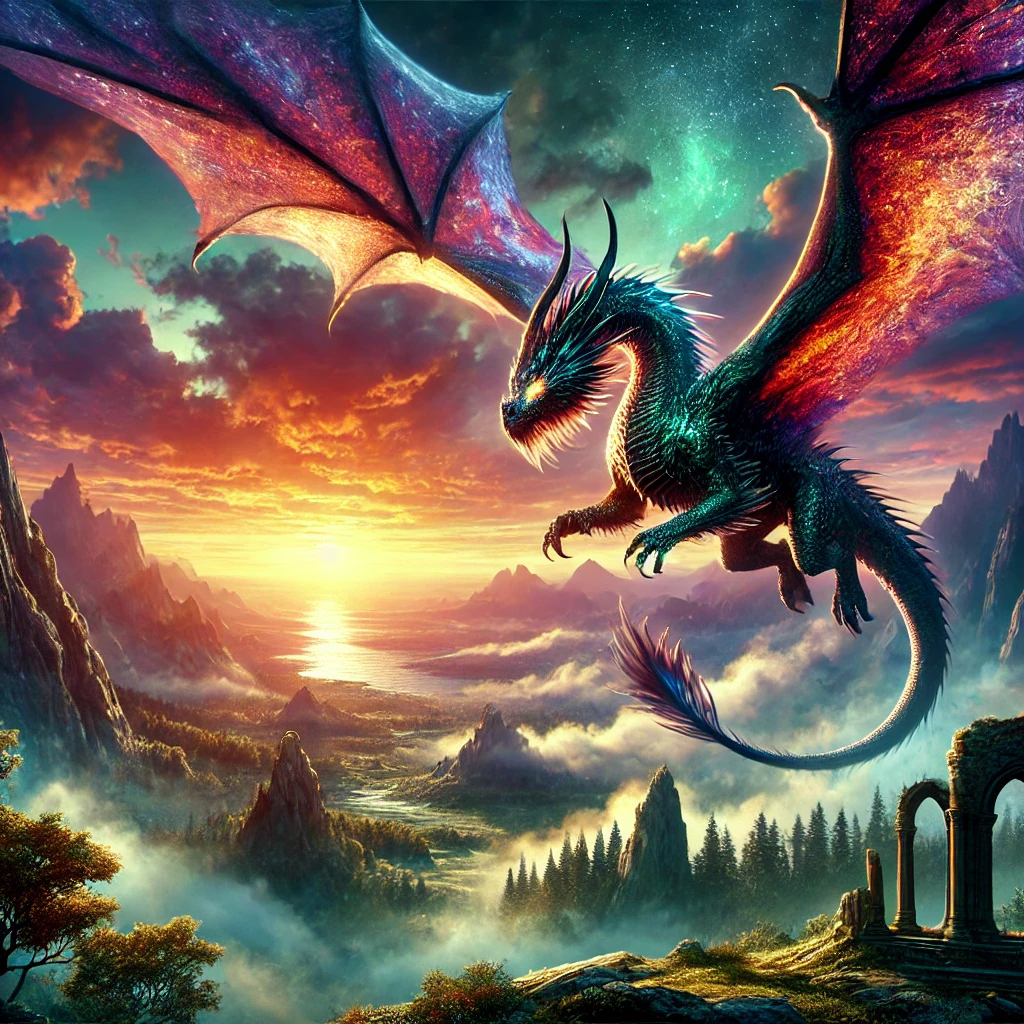The Case for Dragons: An Exploration of Evidence and Theories
The notion of dragons as real creatures has captivated human imagination for centuries. While often relegated to the realm of myth and fantasy, several lines of evidence and theories suggest that these legendary beings might have been inspired by real-life encounters with prehistoric creatures or even natural phenomena. This exploration combines scientific theories, historical accounts, and popular perspectives, including notable voices in contemporary discourse.
Scientific Foundations: The Discovery Channel Mockumentary
One of the most significant contributions to the discussion of dragons is the Discovery Channel's mockumentary, Dragons: A Fantasy Made Real. This documentary presents a speculative yet scientifically grounded exploration of how dragons might exist. It examines biological mechanisms that could enable features typically associated with dragons, such as fire-breathing. For instance, the documentary draws parallels to the bombardier beetle, which can eject a hot chemical spray as a defense mechanism. This comparison suggests that a dragon's fire-breathing ability could theoretically be feasible through a similar biological mechanism, raising questions about the evolutionary adaptations that could allow such a creature to exist (Discovery Channel, https://www.amazon.com/Dragons-Fantasy-Made-Discovery-Channel/dp/B000WR1XRK).
Historical Perspectives: Dinosaurs and Ancient Myths
The connection between dinosaurs and dragons is another intriguing avenue of exploration. Some proponents argue that ancient civilizations may have based their dragon legends on encounters with large, reptilian dinosaurs. A detailed discussion on this topic can be found on the Northwest Creation Network, which posits that the descriptions of dragons in various cultures bear striking similarities to known dinosaur fossils, suggesting that these creatures were not entirely imaginary (Northwest Creation Network, https://nwcreation.net/dinosdragons.html).
Conversely, a more fringe perspective presented in a forum post argues that the narrative surrounding dinosaurs is part of a conspiracy to obscure the existence of dragons. It claims that dinosaurs were fabricated as a scientific explanation that diminishes the possibility of dragons being real. This viewpoint suggests that ancient texts and folklore about dragons hold more truth than contemporary science acknowledges (David Icke Forum, https://forum.davidicke.com/index.php?/topic/25849-dinosaurs-were-made-up-to-hide-the-truth-about-dragons/).
Furthermore, biblical references to dragons—such as those found in the Book of Job and Revelation—might hint at real creatures that lived in the past. The interpretation of these texts suggests that the term "dragon" may have been used to describe actual animals encountered by people in ancient times.
Cover-Ups and Misinterpretations of Fossils
Another layer to this theory involves the potential misinterpretation of fossil records. Advocates argue that many dinosaur fossils have been classified in ways that obscure their true nature. Some believe that what we consider “dragons” might actually be misunderstood remnants of these ancient creatures. This argument implies that societal biases and prevailing scientific paradigms could prevent a clearer understanding of humanity's past encounters with these majestic beings.
Cultural and Scientific Perspectives: The Voice of Joe Rogan
In contemporary discussions, figures like Joe Rogan have brought renewed attention to the topic of dragons, advocating for the exploration of alternative explanations regarding their existence. Rogan frequently emphasizes the need to keep an open mind about historical myths and their potential links to real events or creatures. He encourages listeners to consider that stories of dragons might not be entirely fictional and that there could be historical truths behind them (Joe Rogan Experience, various episodes discussing cryptozoology and cultural narratives).
Scientific Challenges: Are Dragons Real?
A critical perspective on the existence of dragons comes from Popular Science, which emphasizes the biological improbabilities of traditional dragon traits, such as flight, fire-breathing, and enormous size. The physics of flight, particularly for a large creature, poses significant challenges, as noted in the article. However, it acknowledges that some dinosaur species could have inspired dragon legends (Popular Science, https://www.popsci.com/science/are-dragons-real/).
Similarly, the Science Focus article reiterates that traditional dragon characteristics are difficult to reconcile with known biology. It also suggests that large predatory animals, such as theropod dinosaurs, could have inspired these myths. Moreover, the article draws attention to modern animals that exhibit dragon-like features. The Komodo dragon has a venomous bite that echoes the dangerous nature often attributed to dragons, and the Asian water monitor resembles dragon depictions in size and appearance. These examples reinforce the idea that real animals may have inspired the mythical concept of dragons (Science Focus, https://www.sciencefocus.com/nature/are-dragons-real).
Anecdotal Evidence and Cultural Beliefs
The article from Tana Hoy presents various anecdotal pieces of evidence supporting the existence of dragons. It discusses how descriptions of dragons can be found in ancient texts from different cultures, suggesting a widespread acknowledgment of dragon-like creatures. The author mentions eyewitness accounts and cultural beliefs that dragons may still exist in remote areas of the world. Such narratives can enrich the idea that dragons, or creatures resembling them, might have lived alongside humans, influencing folklore and mythology (Tana Hoy, https://www.tanahoy.com/get-ready-to-be-shocked-and-amazed-dragons-are-real-and-heres-proof/).
While the evidence for the existence of dragons remains speculative, the intersection of scientific theories, historical documentation, and cultural narratives invites a fascinating exploration of what these mythical creatures might represent. From the biological mechanisms proposed by Dragons: A Fantasy Made Real to the historical perspectives provided by the Northwest Creation Network, the fringe conspiracy theories discussed in David Icke's forum, the insights from Joe Rogan, and the anecdotal evidence outlined by Tana Hoy, the concept of dragons as real beings may not be as far-fetched as it seems. As we continue to uncover more about our planet's history and the creatures that once roamed it, the possibility of dragons—real or imagined—will likely persist in capturing our imagination.
Sources
1. Discovery Channel. "Dragons: A Fantasy Made Real." https://www.amazon.com/Dragons-Fantasy-Made-Discovery-Channel/dp/B000WR1XRK
2. Northwest Creation Network. "Dinosaurs and Dragons." https://nwcreation.net/dinosdragons.html
3. David Icke Forum. "Dinosaurs Were Made Up to Hide the Truth About Dragons." https://forum.davidicke.com/index.php?/topic/25849-dinosaurs-were-made-up-to-hide-the-truth-about-dragons/
5. Popular Science. "Are Dragons Real?" https://www.popsci.com/science/are-dragons-real/
6. Science Focus. "Are Dragons Real?" https://www.sciencefocus.com/nature/are-dragons-real/
7. Tana Hoy. "Get Ready to Be Shocked and Amazed: Dragons Are Real and Here's Proof!" https://www.tanahoy.com/get-ready-to-be-shocked-and-amazed-dragons-are-real-and-heres-proof/

